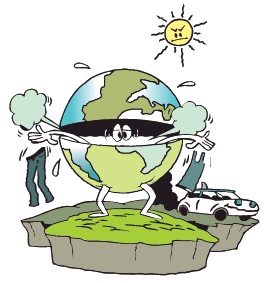Apr. 17:ENVIRONMENT SNIPPETS
Pollution emitted near equator has biggest impact
In a new study, researchers from the University of North Carolina at Chapel Hill say that emissions in a region close to the equator produces more of the greenhouse gas ozone than emissions in a region farther from it.
Ozone forms when ultraviolet light interacts with nitrogen oxides which are present in combustion exhaust from vehicles, among other sources. The more intense sunlight and higher temperatures in regions close to the equator speed up the chemical reactions that form ozone. Higher temperatures also increase the vertical motion of air, transporting ozone-forming chemicals higher where they can live longer and form more ozone. 
Govt rapped for delay in vehicle scrapping policy
The National Green Tribunal (NGT) has rapped the Centre for delay in the introduction of a new scrapping policy which will provide incentives for surrendering old polluting vehicles. It has asked the Govt. to expeditiously frame a scheme in this regard.
NGT said more than a year has passed since its directions, which include benefits in the purchase of new cars. It has also directed Punjab, Haryana, Rajasthan and Uttar Pradesh governments to hold a meeting with the chief secretary of the Delhi government to identify land in border areas to park vehicles banned from plying in Delhi NCR.
Â
Now, Centre plans green transport push
The Urban Development Ministry is preparing a plan for promoting ‘green transport’ in cities in a bid to reduce vehicular pollution and put a brake on the rising number of private vehicles. It has been recognized that any appeal or campaign to shift people from private vehicles to public transport won’t bear fruit until the necessary facilities are created in each city.
The proposal primarily focuses on cycling and plying of electric vehicles for public transport and for last mile connectivity as well. The Heavy Industries Ministry is also working on a plan to allocate nearly Rs. 300 crore to provide electric buses in some cities.



